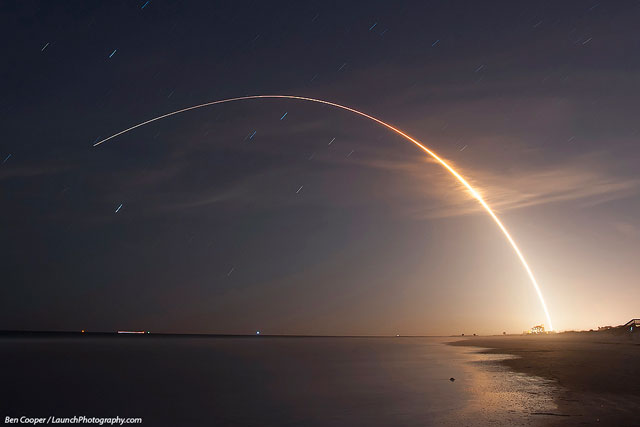(Warning: contents and dates are approximates. Want exact data, look it up yourself.)
“It’ll never happen!” We’ve heard the naysayers before, over and over again. “It’s not possible! If God wanted us to fly, he’d have given us wings!” Yet there’s something in us that wants to reach beyond our frail bodies. We took to the seas, without God giving us fins. It was only natural we’d want to fly too.
From ancient myths to the Chinese building giant kites, to Leonardo Da Vinci’s designs for a flying machine, to Newton’s Third Law of Motion, man wanted to fly like the birds. Some birdbrains briefly became tower jumpers, in a variety of winged outfits, briefly being the operative word.
Yet the list of aviary dreamers continued to grow, right into the 20th century. The Wright Brothers got it right in December 1903 with the first powered flights. Their original contraption of wood, wire and canvas, coupled with intense research, took off several times, the last flight of the day lasting 59 seconds and covering approximately 850 ft.
That 59 seconds only flamed our desire to feel the wind in our faces, but the achievement of air flight came at a dangerous time in history. World War I. Driven by war, aviation advanced in leaps and bounds. Fabric and wood gave way to aluminum. Engines got bigger, distances further and payloads larger. 59 seconds turned into trans-Atlantic crossings and the 1930’s brought us the first jet engines, followed shortly thereafter by World War II.
The aeronautical demands of war left destruction in the wake of larger and larger planes, but post-war led to military bombers being recycled into commercial airlines. In only 50 years we were taking the civilian masses airborne. However, our desire to fly wasn’t limited to the mile of air above our heads. We had entered the Jet Age.
We wanted to go further, faster, and higher. WWII had introduced deadly missiles and the Atomic bomb. Building on that research, the Jet Age leapt into the Space Race. Russia beat us into orbit, but in 1969 the USA landed on the moon. Flight went from a bumpy 59 seconds to an 8 day roundtrip adventure to the moon.
Not too bad for a species that was face-planting in the Danube River as human-powered wings failed to flap hard enough. Now here we are, 115 years later with various ships, satellites and Rovers wandering our solar system. Billionaire venture capitalists/commercial companies are vying to be the first to take John/Jane Doe on their honeymoon space flight. And people are applying to be the first Mars colonists, despite it being a one-way ticket.
Clearly the galactic dream lives on in the hearts and minds of all us Nerds. We dream of locating, then reaching the next near-Earth planet, but to do that successfully we need ships capable of Faster-Than-Light, or something even more spectacular.

But is that even possible? I mean, seriously, there are limits to the theory of relativity, and EVERYONE says FTL exceeds those limits. Yeah, I get it, but we heard the same thing for centuries upon centuries. If God wanted us to fly, he’d have given us wings, but we proved those pessimists wrong.
So I’m launching my own speculative investigation, mixing hard science and humor as I Ask 5 Friends, who spend their days imagining our futures, what they think.
First up to the launch pad is acclaimed author, L.E. Modesitt
If God Wanted Us to Fly… in Space
To begin with, if there is a Deity, I’ve got a beef. Actually, I’ve got several, but the one pertinent to the topic is simple enough. Why did You put all those lovely stars and planets out there, and then design us with enough intelligence to want to explore them, but put us in a universe whose rules seem to preclude the possibility? Or is it a great cosmic test to see if we can break the rules and get there anyway? Is there a universe-wide competition to see which civilization can discover and master Faster-Than-Light travel first?
In fact, getting to the stars may just prove the greatest test possible for homo-not-so-sapiens, because, either through Intelligent Design [with which I have great problems, but throw out, perhaps in more ways than one] or evolution, if there was ever an organism NOT designed for interstellar travel, most probably the human body fits that definition. After all, we can’t survive outside of a comparatively narrow habitat range, even on our own planet, without artificial aids, and the farther we depart from that range, the more assistance we need… and that’s just to survive without going anywhere. But then human beings aren’t designed to do a whole lot of things that we do, thanks to our ability as gadgeteers and toolmakers.
So what gadgets do we need, besides some form of artificial biological habitat [which we already largely have the ability to produce]? Given the considerable distance between stars, we need either a Faster-Than-Light propulsion system, a warp drive, or the ability to create wormholes in the fabric of space. Without one of those, or the equivalent, we aren’t going anywhere fast enough that the equipment we build won’t expire of old age and material fatigue before we can reach anywhere we want to go.
Well… we could re-engineer ourselves toward extreme longevity, but given the human tendency to get easily bored, that just might result in any astronaut becoming terminally suicidal somewhere in the millennia it takes to get anywhere with any technology we now have or can logically project under special and general relativity.
There’s at least one theoretical possibility for circumventing the restrictions of the laws of the universe as we now know them, and that’s by utilizing or creating wormholes. Of course, there’s problems with that – so far it appears that the energy requirements, assuming that we can even develop the necessary gadgetry, are on the magnitude of that possessed by a small black hole. That also suggests that, whatever technological gadgetry we might develop for interstellar travel, one of the greatest associated problems will be just how to power it.
So all we need is a better theory, technology that breaks or circumvents the known physical laws of the universe, and an enormous amount of power for every FTL ship. Shouldn’t be too hard for a wingless species that flies, survives, and often thrives in places and spaces that should immediately kill us… should it?
NOTE: Certain aspects of this issue are the underlying subject of my next – and very hard-science-based – book – Solar Express, due out from Tor in November 2015.
L.E. Modesitt, Jr. is the bestselling author of over sixty novels encompassing two science fiction series and four fantasy series, as well as several other novels in the science fiction genre. His most recent releases are Heritage of Cyador (2014) and Madness in Solidar (2015). Check out his website at: www.lemodesittjr.com
Second to the speculate FTL is a newcomer to Ask 5 Friends, author E.E. King
Can We Travel Faster than the Speed of Light?
“Only two things are infinite, the universe and human stupidity, and I’m not sure about the former.” – Albert Einstein
“For NASA, space is still a high priority.” – Dan Quayle
Can we travel faster than the speed of light? We already do.
Thoughts travel Faster-Than-Light. Emotions travel Faster-Than-Light – and what about entanglement theory?
When two particles become entangled, one affects the other instantaneously, Faster-Than-Light. This connection, quantum connection, persists – no matter the distance. Even when particles are on opposite sides of the universe, even if one is 10,000 Leagues Under the Sea and the other is off on The Chase of the Golden Meteor.
It seems more like voodoo than science. But the evidence that it exists is overwhelming.
We used to think that space – whatever else it is – served as a medium that separated. We believed that to influence something, we had to have physical contact. In other words, to open a door you must be able to turn the handle. Now we know that is not true. Quantum entanglement contradicts that and accounts for why the universe is so drafty.
One of the most fundamental delusions of humanity is to suppose that I am here, and that you are there. Despite what I see, despite what you feel, we are both here and there at the same time. That is why we never know if we’re coming or going.
Einstein was among the first physicists to recognize—and sharply criticize—this possible feature of quantum mechanics. He dubbed entanglement theory, ‘spooky action at a distance’, denying the evidence before him as too weird to be correct. It was the biggest mistake of his career.
Faster-Than-Light communication between entangled systems can be achieved because the time dilation of special relativity allows time to stand still from Light’s point of view. Or at least that’s what Light claims, though it’s been known to stretch certainty and hide itself under a barrel.
Time refutes this, claiming it never has time to stand still and needs a vacation. But it lies. It has all the time in the world.
So – to travel faster than the speed of light, all we’d need to do is to entangle enough particles that contain consciousness with something that we could send into the far reaches of space and voila!
I think we should begin experiments with subjects who would have less consciousness to transmit, say, Dan Quayle or Sarah Palin.
Let’s begin by putting Dan into the CERN Particle Accelerator. Spin him around so quickly that a few of the particles of his brain become entangled with something similar, like rocks.
Then, wherever we send the rock particles, Dan’s consciousness, what there is of it, would go too – and Faster-Than-Light.
We could begin with Dan and move gradually up the evolutionary ladder to amphibians, guinea pigs, politicians, primates and eventually cephalopods.
E.E. King is a performer, writer, biologist and painter. Ray Bradbury calls her stories “marvelously inventive, wildly funny and deeply thought provoking…” Her books; Dirk Quigby’s Guide to the Afterlife, Story Collections: Real Conversations with Imaginary Friends, Another Happy Ending, are available in audible, in print and on-line. Her short stories have been published widely. Check out stories, paintings and mayhem at www.elizabetheveking.com
Third up to join us on this journey is another new friend, author Alan Black
If God meant us to fly, he’d have given us wings.
Oh wait! He created the man who invented the airplane. Going Faster-Than-Light? God already put in place all abundance above all that humans can ask or think. He has readied the multi-verse for us in everything and anything we can imagine. It’s up to us to figure out how to use what he has already created. But, FTL? Nothing can go faster. Oh wait! Science has already proven the existence of substances going FTL.
Let’s look at black holes. A black hole’s gravity traps light and completely renders the speed of light moot with light effectively going zero on the speed-of-light-ometer. What happens when a human slaps into a black hole’s nasty event horizon? Spaghettification and death, right? We are stretched beyond the cohesive limits of our physical bodies as we are three dimensional and unable to touch that zero thick event in 3D, part of you is there and part is not. I believe that as we race forward reaching top speed of light limit, the result at the other end will be the same. Spaghettification. Light’s speed limits rule us at both ends, with speeding tickets resulting in death, not to mention the really bothersome time dilation issues.
Many postulate Einstein-Rosenberg Bridges (wormholes) generated in our universe will take us from point A to point T in an instant, skipping the BS in between. The only trouble with this theory is the wormhole’s event horizon must somehow be thick enough for the spacecraft to both enter here and exit into normal space there, at the same time. If not, spaghettification. Those two points on the ‘folded piece of paper illustration’ ignore the deadly conundrum of being in two places at the same time. How can my head be in Alpha Centauri when my ass-end is still at home?
Our only other clear option is to get off the freeway and go around the speed limits. Let’s cut across the side streets, learning to skip from one universe to another and back again, completely ignoring both FTL limits. Too fast and the top limit kills us. Stopping completely at zero speed kills us. So, we must build engines to go less than zero.
No. I don’t mean backing up. That’s just speed in a different direction. The engine configuration must power our spacecraft in negative speed. This will push us out of this universe where the speedometer controls our movements and into a space between universes, where FTL doesn’t control how quickly we move. Sort of like driving country roads on the county sheriff’s day off.
I will admit the whole navigation thing is a bit troubling at this point, as distances become nullified since we are no longer moving in any direction, but rather we’re moving in every direction at the same time. Time would also cease to exist since we aren’t ruled by motion or non-motion, but by negative motion.
Alan Black has written ten novels since 1997, starting with Eye on the Prize. He is a multi-genre author who never met a good story he didn’t want to tell. He was born in Kansas and raised in Missouri, then did a stint in the U.S. Air Force, but ultimately he and his wife made Arizona home. Alan is a #1 Amazon Best Selling author for Metal Boxes, a YA SciFi/military/action adventure. His most recent novel is Empty Space. Find out more about Alan at www.alanblackauthor.com.
Fourth to plot the future of man is the ever funny imaginative author, Gini Koch.
Is FTL Possible?
What man can imagine, man can create.
Considering that we already have NASA and other scientists talking about creating realistic FTL ships – potentially ready in our lifetimes – heck yeah, we can do it.
Since the first stories of people trying to fly, the naysayers have been there, sharing how it couldn’t be done and using every failure or setback as a way to show, “Look, can’t be done!” And yet we’ve broken the sound barrier, commercial airline flight is so common as to be boring and something to get through versus an adventure, we have a manned space station floating around Earth, and cool rockets and rovers and telescopes and more zipping about all over our own solar system and beyond.
Sure, FTL sounds difficult, and we’ve been told it’s impossible. But we were also told that personal computers weren’t important and wouldn’t catch on, that telephones smaller than bricks weren’t a possibility, that cars driving themselves was just fiction, that it was impossible for the Kardashians to actually become celebrities and stick around for years and years, and so on. And yet, every one of these things and more happens every day, overcome and ignore the naysayers, exceed expectations, and become commonplace.
So, how will we do it? I’m honestly putting my money on however they did it on Star Trek. We’ve got the replicators (those nifty 3D printers), we’ve got the communicators (take a look at your phones), we’ve got the medical apps and more (on those phones), and we’re damned close to the holodeck (give TV and, most importantly, Madison Avenue just a little time to figure out how to totally IMMERSE us in a buying experience and the holodeck will be in everyone’s living room). Truly, warp drives cannot be far behind.
Sure, dilithium crystals don’t exist in the way Star Trek created them, but, if we look to Galaxy Quest – Star Trek’s loving satire – beryllium actually exists. Can that be used to power warp drives? Maybe. Why not go for steam and/or water? The science exists to make a generational steam or water-powered spaceship, so why not? Less than a year ago, IFL Science reported on how NASA is working on a variety of warp ship designs. All of them viable, though some will of course be more equal than others. But warp drive is coming.
We’ve imagined it. We’ll create it.
Gini Koch writes the fast, fresh and funny Alien/Katherine “Kitty” Katt series, as well as lots of others. She’s made the most of multiple personality disorder by writing under a variety of pen names, including G.J. Koch, Anita Ensal, Jemma Chase, A.E. Stanton and J.C. Koch. Buy her books – her meds don’t come free, you know. Gini can be reached through her website www.ginikoch.com
And lastly is an author who has launched many readers into space, Ben Bova
Flying Faster-Than-Light (?)
Let’s assume that Einstein was – well, not wrong, exactly – but a little shortsighted. His relativity theories claim that nothing in the universe can move faster than light. The speed of light – 186,000 miles per second (300,000 kilometers per second if you’re not an American) is a universal speed limit.
Despite all the evidence that’s piled up over the past century in favor of Special and General Relativity, let’s assume that faster-than-light (FTL) might be possible, after all. Let’s try flying FTL and see what happens.
No matter how fast we go, we’ll still be bound by some physical constraints: for example, the Laws of Thermodynamics. They appear to be quite basic to the behavior of the universe, as any gambler can tell you, no matter whether your favorite natural philosopher is Newton, Einstein, or Pope Innocent I.
The Laws of Thermodynamics are quite simple. They tell us that you can never win. You can’t even break even. You always have to pay for what you get, and what’s more, you must always pay more than the value of what you receive. Happens all the time.
What does this tell us about FTL travel?
Let’s think about an interstellar journey. Nothing spectacular, just an easy jaunt in our 10,000-metric-ton cruiser over to the star Arcturus, a scant 36 lightyears from downtown Earth. For openers, we’ll poke along at a stately one-third (0.33) of lightspeed.
Using Newton’s formula for kinetic energy, E = 1/2mv2, my trusty electronic calculator tells me that the energy involved in moving our cruiser at 0.33 Lightspeed is 1033 joules, in metric units. If you’re an American engineer, that’s 7.376 x 1022 foot-pounds, or 2.78 x 104 kilowatt-hours, which your friendly local electric utility will sell you for something under ten thousand million million dollars (9.89 x 1015 dollars, including fuel adjustment charges). If you’re a physicist, the kinetic energy comes to 1030 ergs.
An interesting number, that last one. Since the Sun puts out 3.86 x 1033 ergs per second, the kinetic energy of our space cruiser flying at 0.33 Lightspeed is equal to 0.000259 second’s worth of solar output. Trivial.
But 0.33 Lightspeed is not FTL.
Nasty things begin to happen when you “get the lead out” and start tootling along closer lightspeed. For one thing, your mass begins to grow. At 0.95 Lightspeed, our 10,000-ton cruiser masses 32,000 tons. At 0.99 Lightspeed the mass has grown to 71,000 tons. And the closer we inch to 1.00 Lightspeed (assuming that’s possible), the more massive we become.
Which means the more energy we’ll need to push us along. The mass curve rises very steeply – asymptotically, in mathematicians’ lingo – as we close the distance between 0.99 and 1.00 Lightspeed. In fact, when we reach the speed of light, 1.00 Lightspeed, our mass becomes infinite. To propel an infinite mass, we need an infinite amount of energy.
How much energy is there in the universe? Doesn’t matter. A ship moving at 1.00 Lightspeed will need it all. If we really open up the throttle in our desire to fly faster than light, we’ll pull the plug on the entire universe. The ship will use all the energy in the universe. Everything collapses. The universe falls in on itself and – perhaps – implodes into another Big Bang.
Which is why there are no FTL ships flitting around our space-time continuum. There can only be one per universe, and that one ends it all. That Big Traffic Cop in the Sky doesn’t allow FTL speeding.
Let’s hope nobody tries it.
Ben Bova is the author of more than 130 books of fiction and nonfiction. The former editor of Analog Science Fiction and Omni magazines, he has served as president of the Science Fiction and Fantasy Writers of America, as well as the National Space Society. He has won six Hugo Awards and received numerous other honors. Check out his website for latest and future releases, www.benbova.net
Whew. I don’t know about you, but that’s a lot of heavy stuff to consider. Guess there’s a reason I didn’t go for a degree in Astrophysics. So let’s see if I can do a quick summary here…
Ben Bova thinks FTL will bring on the next Big Bang.
E.E. King wants to send the politicians into FTL first, a sentiment probably shared worldwide.
Gini Koch says if Gene Roddenberry can dream it, we can do it.
Alan Black hopes for a technology that allows our heads and asses to reach the destination still attached… to the appropriate bodies.
And L.E. Modesitt thinks our thumbs got us this far, so what’s a bit a genetic modification and the harnessing of a black hole, if it gets us to the stars?
Me… I think, that as a species, we’re driven to achieve the impossible, like FTL, while ignoring the possible, like simple kindness to each other. Maybe it’s too hard to do the ‘possible’ because it requires a voluntary, fundamental change in the human psyche to not fight over every natural resource laid out before us.
So we focus on the ‘impossible’ and somehow achieve that. We’ve sailed the treacherous oceans and flew our unfriendly skies, because, while God didn’t give us fins or wings, he did give us brains. We bit the apple, but we’re still a long way from the core. I think with a few more bites we’ll achieve our goals. It might not be what we expected. It might not be the FTL everyone imagines. It might not be FTL at all. It might require a better understanding of, and the redefining of Space itself.
Maybe when there is no end to where we can go, and truly unlimited resources, we’ll be able to achieve the inner compassion necessary to survive out there. So I pray we do achieve that level of technology, hoping it brings us to the next level of humanity.
That what me, and my 5 friends think. What do you think?





Loved this article! I’ve been intrigued by space travel since I was a child and I love all the multiple answers we got to this question. Where would I go on a tour? I’d start with the moon and then onto Alpha Centauri to see if Gini Koch’s aliens do exist, then Sirius. Heck, I’d go anywhere as long as it was space!
I like where your head’s at, Andrea. 😀